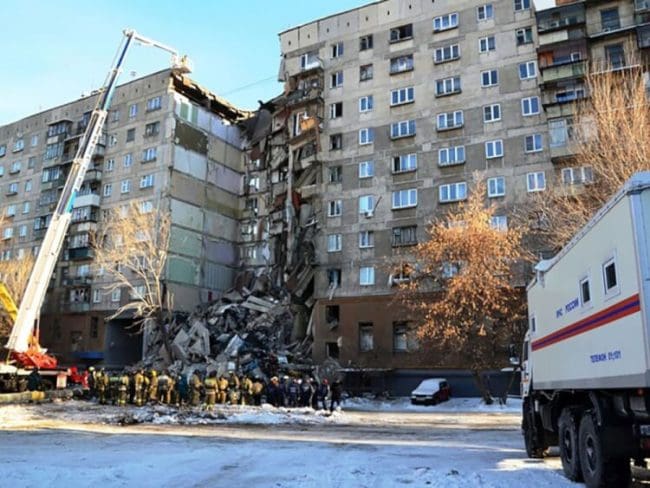At least four people have died and 35 others are missing after a gas explosion brought down several floors in an apartment block in Russia’s Ural Mountains on New Years Eve.
Authorities in the industrial city of Magnitogorsk said five people were hospitalised with injuries and 35 others remained unaccounted for.
Nearly 1,400 rescue workers raced against time to search for survivors before they suffered hypothermia in the -17 degree conditions, using powerful heaters to raise temperatures in the wreckage. Weather forecasters predicted temperatures dropping to -24C overnight.
Russian officials said that the odds of finding anyone alive in the debris looked increasingly slim given the extreme weather.
“The chances are reducing with time,” Health Minister Veronika Skvortsova said. “But incredible stories do happen.”
Officials said they had all the necessary equipment for a thorough search, but the work was proceeding slowly due to fear other sections of the 10-story building might collapse. Residents of some sections were evacuated as a precaution.
The structure was constructed from concrete panels. One that was left hanging in the collapsed section of the building came crashing down as television stations aired live broadcasts from the scene.
Russian President Vladimir Putin visited the accident site about 1,400 kilometres southeast of Moscow and went to a local hospital where injured residents were taken.
At the hospital, Putin spoke to a 13-year old boy, who sustained head injuries and frostbite after spending an hour under the rubble before being rescued.
“You will get well soon, you are a fighter,” Putin told the boy after hearing that he was practicing martial arts.
Local authorities initially said 68 people registered as residents in the collapsed section of the building were missing, but later tracked down some of them.
The Russian Emergency Ministry later said that 35 people remained unaccounted for, and it wasn’t clear if they were in the building when it collapsed.
Gas explosions in Russian homes and businesses are common, and they are usually blamed on neglect of safety rules or poor maintenance.




